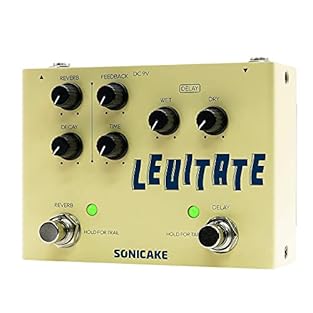Description
Universal Guitar Pedals are fresh in, this is a New one & the Just Pedals team think it is a very nice one too. Good news ! This can be delivered straight to your door, quickly and securely, anywhere in the UK & Europe. For more info on this New Guitar Pedals, please read on for full details, demos, videos, reviews and order online.
In 2021, music hardware/software experts Universal Audio launched their UAFX line of guitar effects pedals — bringing the same class-leading innovation and ease-of-use of its pro audio products to a tactile, plug-and-play stompbox format. The range has been expanded with the addition of the Galaxy ’74 Tape Echo & Reverb, which captures the warm, warped, relentlessly-analogue effects of the iconic mid-’70s Roland Space Echo hardware for a crayon box of lush textures, right at your feet!
Swim In Warm, Gritty Delay Textures
Get iconic tape textures filled with the musical “wow”, flutter and saturation of the original Space Echo unit, and use the multi-head design (along with doubled delay times and tap tempo) to create rhythmic subdivisions not possible on the original hardware. You can even bend minds in realtime with self-oscillation for crazy, runaway delay effects!
Get Lost in Cavernous Spring Reverb
Universal Audio boldly believe that only their Galaxy ’74 gives you the authentic, dub-heavy effects of the original’s spring reverb. Along with a Dwell control for even wilder sounds, the Galaxy ’74 hurtles your tone into the cosmos, with textures that leave other emulators of this hallowed hardware behind in a puff of space dust!
Dual Stereo Effect Engines
The UAFX Galaxy ’74’s powerful engine runs separate stereo instances of each reverb and delay — for stunning three-dimensional stereo depth that is practically unmatched by any other stompbox.
UAFX 2.0 Update: MIDI Control, Better Bluetooth, Expanded Presets & More
Using the rear panel USB-to-MIDI connection*, UAFX pedals fit right into your programmable MIDI rig — receiving preset changes, BPM clock sync and more! Here’s everything you get out of the free update:
- USB MIDI control: Bring your live shows to life with USB MIDI support providing 128 recallable presets, MIDI BPM clock sync and real-time expression.
- Wired USB app control: Control your pedals via the UAFX app over a wired USB connection (iOS or Android), offering another robust option for managing settings.
- Improved Bluetooth connectivity: Ground-up redesign of UAFX app control over Bluetooth, for improved reliability.
- Footswitch options: Switch between more presets on UAFX Amp Pedals using powerful new performance modes like Live, Tour (A/Bypass-B/Bypass) and A/B-C/D.
*Requires a compatible USB MIDI host, controller, or interface. Control of multiple UAFX pedals will require an additional USB hub. Click here to learn more.
Key Features
- One of the most authentic emulations of the classic mid-’70s analogue Japanese ambience device.
- Full modelling of the classic multi-head tape delay mechanism.
- Exacting emulation of the original hardware’s spring reverb.
- Definitive capture of iconic analogue preamp section.
- Doubled delay times for effects that go beyond the original hardware.
- Download the UAFX Control app and tweak footswitch functionality, adjust realtime effects, and customise unique oscillation sounds to blast your tones into the stratosphere!
- Silent switching, buffered bypass, analogue dry-through, spillover/trails and stereo/dual mono operation.
Specifications
- Power Requirements: Isolated 9V DC, centre-negative, 400 mA minimum (PSU sold separately)
- Inputs: 2 x ¼” TS
- Outputs: 2 x ¼” TS
- USB Type-C for updates via computer
- Height: 2.56″ (6.5 cm)
- Width: 3.62″ (9.2 cm)
- Depth: 5.55″ (14.1 cm)
- Weight: 1.24 lbs (0.567 kg)

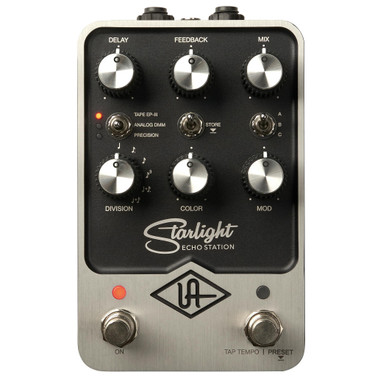
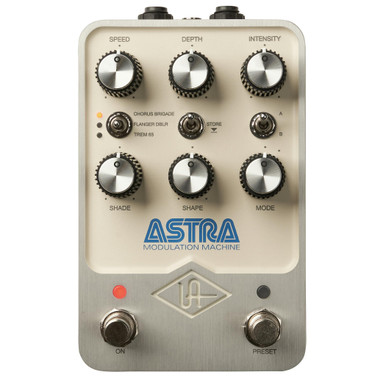
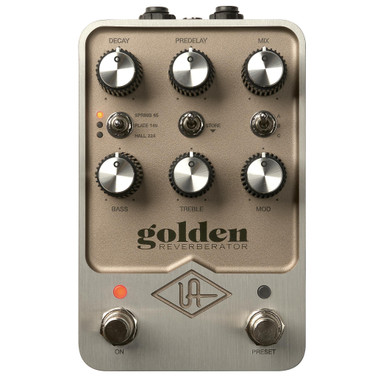
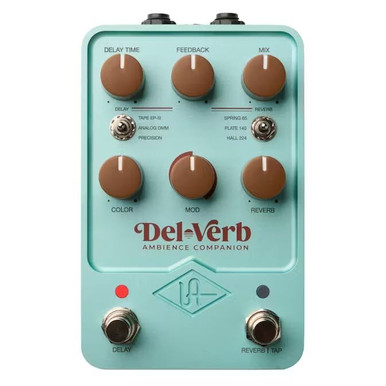
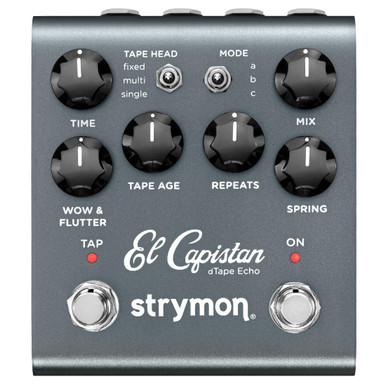
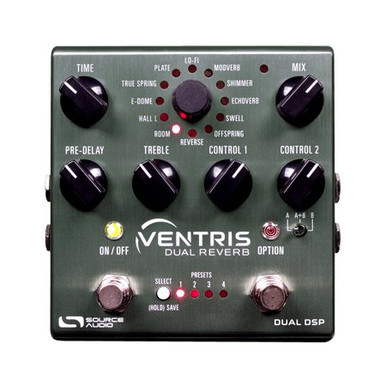

![☑️[Legendary Tape Echo Emulation:] The Donner White Tape stereo tape delay pedal masterfully replicates the iconic sound of classic tape echo machines, delivering an authentic experience with every use. ☑️[Precise Control: ] Independent Time, Feedbac...](https://m.media-amazon.com/images/I/41X14OsB88S._SL313_.jpg)

